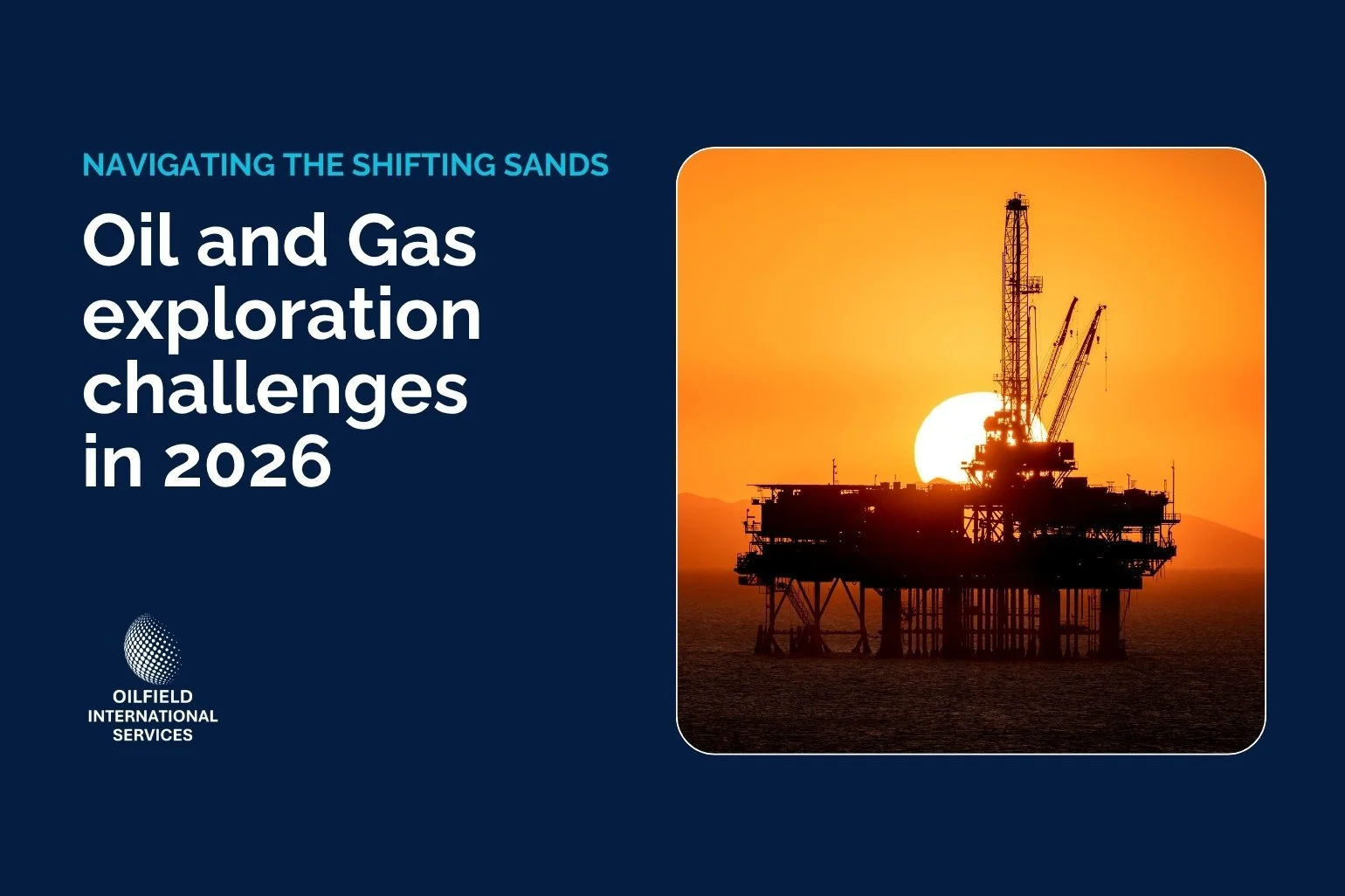Navigating the shifting sands: Oil and Gas exploration challenges in 2026
The year 2026 presents a complex and multifaceted landscape for oil and gas exploration.
While global energy demand continues to rise, driven by developing economies, the industry is simultaneously grappling with immense pressure from environmental concerns, geopolitical instability, technological evolution, and fluctuating market dynamics.
The traditional exploration playbook is being rewritten, and companies must adapt rapidly to secure future energy supplies while maintaining social license to operate.
1. The energy transition and de-carbonisation imperative
Perhaps the most significant overarching challenge is the accelerating global energy transition. With increasing commitments to net-zero emissions and the proliferation of renewable energy sources, the long-term demand for fossil fuels is under scrutiny. This creates:
Investment Hesitation: Investors are increasingly wary of "stranded asset" risks, making it harder to secure funding for long-cycle, capital-intensive exploration projects. ESG (Environmental, Social, and Governance) criteria are heavily influencing investment decisions.
Reduced Exploration Budgets: Major oil companies are reallocating capital towards lower-carbon ventures, often leading to scaled-back exploration budgets and a focus on high-probability, near-field opportunities rather than frontier exploration.
Regulatory Uncertainty: Governments worldwide are implementing stricter environmental regulations, carbon pricing mechanisms, and even moratoriums on new exploration licenses, particularly in environmentally sensitive areas. This regulatory flux makes long-term planning incredibly difficult.
2. Geopolitical volatility and supply security
Geopolitical events continue to cast a long shadow over exploration activities:
Regional Instability: Conflicts, political unrest, and changes in government in key oil-producing regions can lead to project delays, operational shutdowns, and increased security costs.
Resource Nationalism: Some countries are asserting greater control over their natural resources, leading to less favorable terms for international oil companies, increased taxes, or even expropriation risks.
Sanctions and Trade Restrictions: International sanctions against certain nations can restrict access to promising exploration acreage or limit the ability to develop and export discovered resources.
Supply Chain Disruptions: Global events can disrupt critical supply chains for equipment, materials, and skilled labor, leading to project delays and cost overruns.
3. Maturing basins and frontier risks
The "easy oil" has largely been found, pushing exploration into increasingly challenging environments:
Deeper Waters and Ultra-Deepwater: Exploration continues to move into deeper offshore areas, which present significant technical hurdles, higher drilling costs, and increased environmental risks.
Arctic and Remote Regions: While holding vast potential, these areas come with extreme operating conditions, logistical nightmares, and heightened environmental sensitivities, making exploration economically and socially contentious.
Complex Geology: New discoveries are often found in more geologically complex formations, requiring advanced seismic imaging, sophisticated drilling techniques, and greater technological investment.
Reduced Discovery Success Rates: As exploration targets become more elusive, the number of commercially viable discoveries per well drilled has generally decreased, impacting the overall return on investment.
4. Technological demands and data overload
Technology is both an enabler and a challenge:
Advanced Data Analytics: The sheer volume of seismic, well log, and production data requires sophisticated AI and machine learning tools for interpretation, prospect generation, and risk assessment. Companies need to invest in these capabilities and skilled personnel.
Digital Transformation: Implementing digital twins, real-time monitoring, and automation in drilling and operations requires significant upfront investment and cultural change.
Cybersecurity Risks: Increased reliance on digital systems also elevates cybersecurity threats, which could compromise sensitive exploration data or operational control.
High-Cost Technology: Many cutting-edge exploration technologies come with a hefty price tag, further squeezing budgets already under pressure.
5. Social License to Operate (SLO)
Maintaining public and stakeholder acceptance is more critical than ever:
Environmental Activism: Strong opposition from environmental groups can delay or halt projects, leading to legal battles and reputational damage.
Indigenous Rights and Local Communities: Engaging respectfully and effectively with indigenous populations and local communities is paramount. Failure to do so can result in significant delays, increased costs, and protests.
Transparency and Accountability: Stakeholders demand greater transparency regarding environmental impact, safety records, and financial contributions, placing additional reporting burdens on companies.
Conclusion
For oil and gas exploration in 2026, success will hinge on agility, innovation, and a pragmatic approach.
Companies must strategically balance the need to meet current energy demand with the imperative to transition towards a sustainable future.
This means focusing on high-value, lower-carbon-intensity prospects, embracing advanced technologies, managing geopolitical risks astutely, and, crucially, earning and maintaining their social license to operate through responsible and transparent practices.
The challenges are formidable, but so too is the industry's capacity for resilience and adaptation.
Contact Oilfield International Services for support today.






